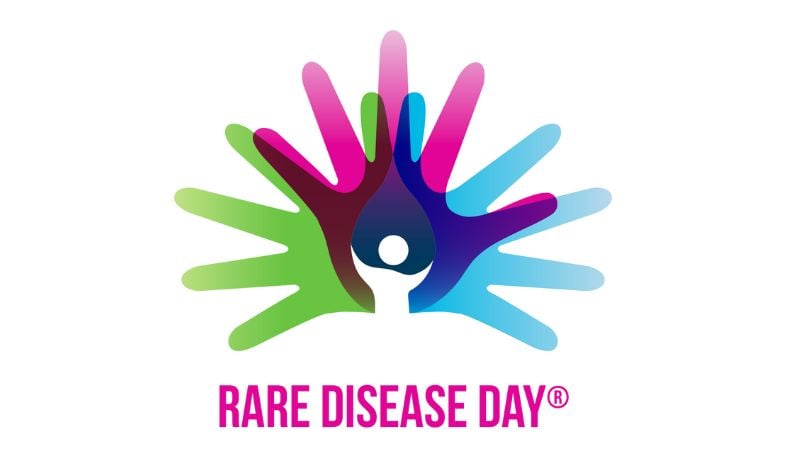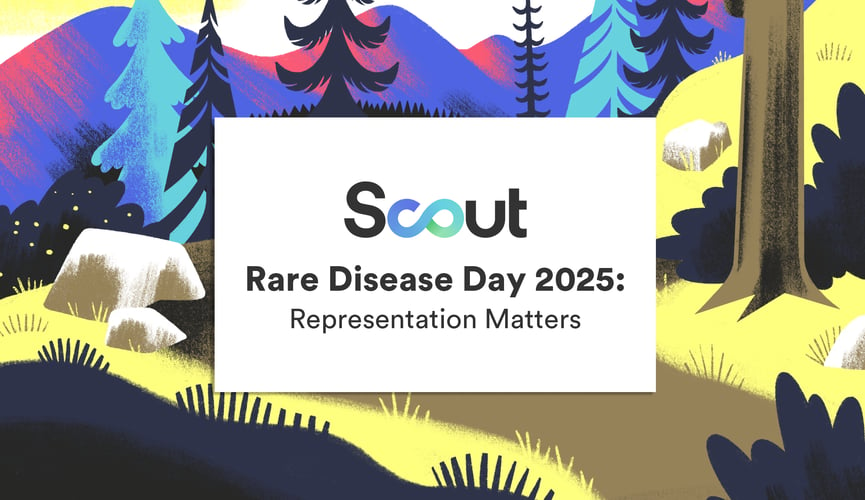
Rare Disease Day is a global event to raise awareness about the unique challenges faced by individuals with rare diseases and their care circles. This observance, celebrated on the last day of February each year, highlights the importance of research and the development of new treatments for rare diseases, which often lack the attention and resources more common conditions receive.
Patient advocacy groups are an essential part of the pursuit of better understanding and treatment of rare diseases. They bridge the gap between patients and researchers in rare disease clinical trials, ensuring that the patient voice is heard and considered throughout the entire process.
The Role of Patient Advocacy Groups in Clinical Trials
Patient advocacy groups provide irreplaceable support, insights, and influence at multiple stages of the clinical research process. Their roles range from enhancing participant recruitment to promoting patient-centricity, educating about clinical trials, advocating for patients, and promoting the use of patient-reported outcomes for a more complete picture of trial outcomes.
1. Enhancing Participant Recruitment
In terms of participant recruitment, one of the greatest hurdles to rare disease clinical trials is finding enough suitable participants. Patient advocacy groups are vital players in enhancing patient recruitment for rare disease clinical trials. One of the first ways patient advocacy groups contribute is by leveraging their extensive networks to identify potential trial participants. These organizations often have deep connections within the rare disease community, which allow them to communicate directly with patients and caregivers.
In addition to their networking capabilities, patient advocacy groups often have a profound understanding of the specific needs and challenges faced by their communities. This insight can be invaluable for trial designers, who can use it to make trials more accommodating and appealing to potential participants. For example, 69% of prospective clinical trial participants say providing transportation and reimbursement for travel expenses is one of the most impactful motivators for participation. Knowing what specific challenges patients face, and therefore what kind of services would help reduce the burden of participation for patients, can help set clinical trials up for success.
|
What kind of services can help rare disease clinical trial patients stick with it? Discover personalized solutions for payment, travel, logistics, and more. Click here to view our Scout Clinical Patient Services. |
Finally, these groups are invested in using their intimate knowledge of the community to push for clinical trials that are culturally sensitive and ethically conducted. This includes advocating for informed consent processes that are tailored to the needs of the rare disease community, which can help build trust and willingness to participate in trials.
2. Promoting Advocacy & Education
Education is another significant area where patient advocacy groups contribute, serving as a reliable source of information about clinical trial participation for prospective patients. The complex nature of clinical trials can often be overwhelming for patients and their families. These groups help demystify the process, explaining the importance of clinical trials in advancing medical knowledge and developing new treatments. and what they can expect every step of the way.
Pam Cusick, SVP of Rare Patient Voice, spoke with Scout on the importance of transparency in patient involvement, especially when it comes to long-term commitments or extensive travel requirements. She believes that providing comprehensive information is crucial to help patients make well-informed decisions, acknowledging that these scenarios impact more than just the individual patient. To hear more on this topic and gain further insights from Pam, click here to tune into this episode of our Driving the Discussion webcast.
Getting the right education can significantly impact a patient's willingness to participate in clinical trials. Rare disease patients juggling work, family, and all of life’s other responsibilities need to understand how trial participation might affect their daily lives. They may need to consider their ability to maintain employment, manage fatigue or other symptoms, and fulfill other obligations. Patient advocacy groups can provide resources and guidance to help these patients navigate these challenges. No matter the patient’s situation, the impact of participating in a clinical trial extends beyond the individual patient—it often touches every aspect of their life and the lives of those around them.
3. Promoting PRO Data Inclusion
Historically, clinical trials focused primarily on hard endpoints like overall survival or disease progression. But these metrics alone do not capture the full impact of a disease or treatment on a patient's daily life—or the other lives impacted. Recognizing this gap, patient advocacy groups began advocating for the inclusion of patient reported outcomes (or, PRO data) in research studies.
Megan O'Boyle, the Patient Engagement Lead of the RARE-X Data Collection at Global Genes, is a strong advocate for incorporating patient-reported outcomes in clinical trials for rare diseases. In her Q&A on Nature's website, O'Boyle asserts that these patient reports, which come directly from patients without interpretation by clinicians or others, are critical as many treatment outcomes may not be evident through traditional biomedical measurements such as laboratory tests or imaging. She further explains that patient-reported outcomes can provide a more comprehensive view of the patient's experience, from symptom severity and quality of life to overall treatment satisfaction.
Patient advocacy groups actively raise awareness of PRO data's significance among researchers and regulatory bodies, emphasizing its role in revealing treatment effects and shaping drug development and regulatory decisions. Thanks to their efforts the inclusion of PRO data in clinical trials has gained increasing acceptance, and rare disease clinical research continues to shift toward more patient-centric strategies.
4. Amplifying the Patient Voice
Patient advocacy groups play a pivotal role in elevating the voices of patients and their caregivers to ensure the unique needs and experiences of individuals living with rare diseases are heard and considered in the decision-making processes. These groups can advocate for patients' rights on a legislative level as well, pushing for policies that improve access to care and treatment. They lobby for more inclusive research, challenging the status quo that often overlooks rare diseases in favor of more common conditions.
It’s not all broad strokes, though: Patient advocacy groups amplify individual patient voices by collecting and sharing patient stories and organizing awareness campaigns. By focusing on the whole person behind the diagnosis they can highlight the real lived experiences of patients, presenting a real-world perspective that often goes unnoticed in the scientific community. This input is invaluable in shaping research priorities and guiding the development of new treatments – and it also helps patients feel less alone in their diagnosis.
“In my opinion, the most important role that they play is giving a platform for the patient voice and keeping families from feeling isolated,” says Scout EVP of Patient Experience and Customer Success KimberLee Heidmann. “Rare disease families can feel like they've been abandoned by the healthcare system. They may have been telling their providers about their child’s or their own symptoms and were told that it wasn’t a significant concern—or that it was some other illness, and it’s not. When they finally receive an accurate diagnosis, they need support from others who have had a similar experience. Advocacy groups provide a space to be with other people who have had like experiences.”
|
Want to hear more from KimberLee? Check out Understanding Rare Disease: Challenges & Opportunities in Today’s Clinical Research for a deeper dive into this topic. Click here to read our Q&A now. |
In essence, patient advocacy groups make the invisible visible. They bring the struggles and triumphs of rare disease patients into the limelight, influencing trials and treatments in ways that would not be possible without their involvement. In doing so, they ensure that every patient voice matters, regardless of how rare their condition might be.
Patient Advocacy Groups in Action: The Cystic Fibrosis Foundation
The Cystic Fibrosis Foundation (CFF) is one of today’s leading patient advocacy groups. They were formed by a group of parents of children with cystic fibrosis in 1955, when people born with the disease weren’t expected to live to attend elementary school.
CFF is just one recent example of the significant impact a patient advocacy group can have on a clinical trial. CFF has been instrumental in driving research and development for new cystic fibrosis treatments like CM001. The CFF has provided substantial funding for clinical trials through campaigns like 2018’s Infection Research Initiative and played a key role in trial recruitment, leveraging their extensive patient network to enroll participants for the trial. They’ve also advocated for PRO data to better ensure that the treatment’s impact on patients’ quality of life is adequately assessed.
Today, in no small part due to their advocacy, education, and influence, screenings and treatment have been developed that enable people with cystic fibrosis to live well into their 30s, 40s, and even longer. Their example of how patient advocacy groups can drive significant progress in clinical research underscores the potential for these organizations to influence the direction and outcomes of clinical trials, ultimately leading to improved patient care and innovative treatment advancements.
From enhancing participant recruitment in clinical trials to advocating for patient-centeredness, educating about clinical trials, and pushing for patient-centricity in trial design, it's essential to recognize patient advocacy groups as active participants shaping the future of rare disease care and treatment.
Their impact extends beyond the scope of individual clinical trials. They shape policy decisions, influence health authorities, and drive patient-centric approaches in drug development. Through their advocacy and education efforts, they ensure that the patient voice is heard and respected in all stages of treatment development and testing.
On this Rare Disease Day, let us acknowledge and celebrate their contributions and continue to support their important work. Together, we can ensure that patients' needs and experiences are at the heart of clinical trials. By incorporating their knowledge and insights into rare disease research, we can move toward a future where every patient has access to effective, personalized treatments – no matter how rare their condition.
There are plenty of amazing patient advocacy groups out there. If you’re not sure where to begin, searching a large database like NORD’s can help connect you or a rare disease patient in your life with valuable information and support.
.png?width=1387&height=800&name=Scout_Logo_RGB%20(1).png)

